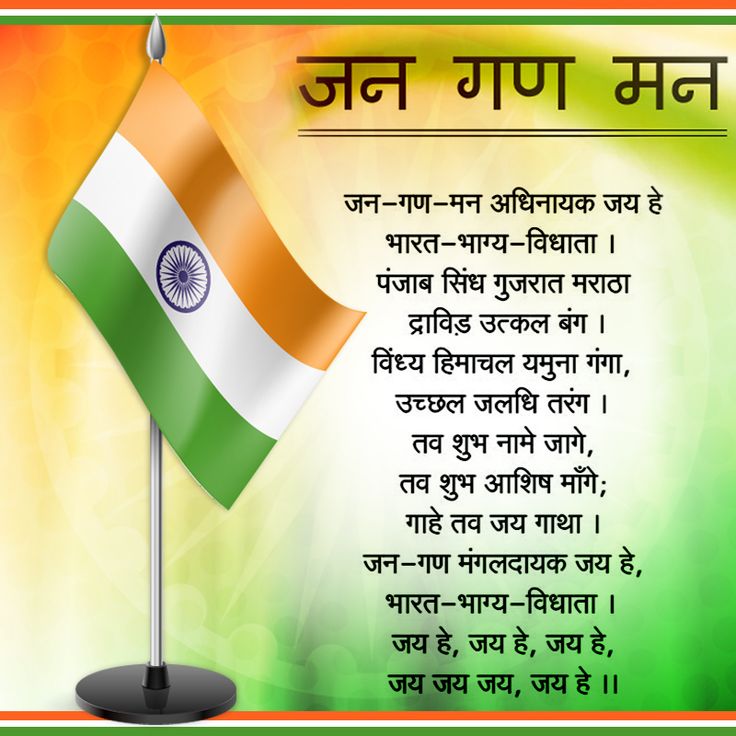10 Powerful Facts About National Anthem of India – A Song That Unites the Nation
Introduction
The National Anthem of India, “Jana Gana Mana,” is more than just a song—it is a symbol of unity, pride, and national identity. Whenever it is played, it evokes deep emotions and reminds every Indian of their shared heritage and patriotism.
Composed by Rabindranath Tagore, the anthem beautifully represents India’s cultural diversity, rich history, and vision for the future. In this article, we explore its history, significance, impact on daily life, and why it continues to inspire millions.
What Is the National Anthem of India?
“Jana Gana Mana” is the official national anthem of India, adopted on January 24, 1950. Originally composed in Bengali as part of a five-stanza poem titled “Bharoto Bhagyo Bidhata”, the song was later translated into Sanskritized Hindi.
It is sung on national occasions, in schools, at sports events, and during official ceremonies, reinforcing the spirit of patriotism and unity.
Lyrics of the National Anthem (in Romanized Hindi)
🎶
Jana Gana Mana adhināyaka jaya he
Bhārata bhāgya vidhātā
Pañjāba Sindhu Gujarāṭa Marāṭhā
Drāviḍa Utkala Baṅga
Vindhya Himāchala Yamunā Gaṅgā
Uchchala jaladhi taranga
Tava śubha nāme jāge
Tava śubha āśhiṣa māge
Gāhe tava jaya gāthā
Jana gaṇa maṅgala-dāyaka jaya he
Bhārata bhāgya vidhāta
Jaya he, jaya he, jaya he
Jaya jaya jaya jaya he!
🎶
The anthem mentions various regions of India, showing the unity in diversity that defines the nation.
History and Evolution of National Anthem of India
📜 1911 – “Jana Gana Mana” was first sung at the Calcutta Session of the Indian National Congress on December 27.
🏆 1919 – The song was played in Germany at an event celebrating Tagore’s Nobel Prize win.
🇮🇳 1947 – It was performed on Independence Day at the Red Fort.
📅 1950 – Officially adopted as the National Anthem on January 24, 1950.
The anthem has been a part of India’s journey from colonial rule to an independent, sovereign nation.
Daily Life Impact of the National Anthem of India
The National Anthem is deeply ingrained in the lives of Indians:
✔ Schools & Education – Sung in morning assemblies, teaching patriotism.
✔ Sports & Events – Played before international matches to represent India.
✔ Government Ceremonies – Hoisted flags and official meetings include the anthem.
✔ Cinema Halls – Many theaters play it before movies as a sign of respect.
✔ Public Gatherings – During Independence Day and Republic Day celebrations, millions sing it together.
It serves as a reminder of national pride and responsibility in various aspects of daily life.
10 Interesting Facts About “Jana Gana Mana”
🔹 It takes exactly 52 seconds to sing the full version of the anthem.
🔹 Rabindranath Tagore wrote it in honor of India’s spiritual unity, not for any ruler.
🔹 Subhash Chandra Bose’s Indian National Army used a Hindi version of the song.
🔹 The song is often mistaken for being written for the British Emperor, but it was dedicated to Bharat (India).
🔹 It is played daily at Rashtrapati Bhavan, Parliament, and other government institutions.
🔹 Bangladesh’s national anthem, “Amar Sonar Bangla,” was also written by Tagore.
🔹 “Jana Gana Mana” is recognized as one of the most melodious national anthems globally.
🔹 During the 1982 Asian Games, a special orchestra version was composed.
🔹 Indian law allows for different musical renditions, but the lyrics must remain unchanged.
🔹 There is a shorter 20-second version used for select occasions.
These facts highlight the rich legacy and significance of the anthem.
Significance of National Anthem of India
The National Anthem represents India’s core values:
🌍 Unity in Diversity – It mentions different regions and brings people together.
🇮🇳 Patriotic Identity – It strengthens national pride and responsibility.
🎼 Cultural Heritage – Tagore’s poetry is a masterpiece of Indian literature.
⚖ Respect & Discipline – Standing for the anthem reflects civic duty and respect.
🏅 International Recognition – It defines India in global sports, summits, and diplomatic events.
It is more than just a song—it is the heartbeat of India’s national identity.
How the National Anthem of India Is Observed & Honored
🎇 Independence Day & Republic Day – Sung at all national celebrations.
🏛 Government & Military Events – Played in all formal ceremonies.
🏟 Sports & Global Events – Representing India on the international stage.
🎭 Cultural & Educational Institutions – Taught and performed in schools and colleges.
🎼 Special Orchestras & Renditions – Recreated by musicians and military bands.
The anthem is an integral part of every major Indian event, reflecting the country’s pride.
Wishing Messages for National Anthem Day & Patriotism: National Anthem of India
💙 “Let’s sing ‘Jana Gana Mana’ with pride and honor our nation!”
❤️ “The anthem is not just a song; it’s a feeling of unity and love for India!”
💛 “May our National Anthem always remind us of our strength and diversity!”
🧡 “Jana Gana Mana unites every Indian heart—let’s cherish it forever!”
Sharing these wishes encourages patriotism and national pride.
FAQs on National Anthem of India
🔹 Q: Why was ‘Jana Gana Mana’ chosen as the National Anthem?
👉 It represents India’s diverse regions and cultural unity.
🔹 Q: Is it mandatory to stand for the National Anthem?
👉 Yes, as per Supreme Court guidelines, but exceptions exist for disabled individuals.
🔹 Q: What is the official duration of the National Anthem?
👉 The full anthem lasts 52 seconds, while the shorter version is 20 seconds.
🔹 Q: Why is Tagore’s “Bharoto Bhagyo Bidhata” important?
👉 It was the original five-stanza poem, from which the anthem was taken.
🔹 Q: Can the National Anthem be played in remixed or pop versions?
👉 No, it must be performed in its original composition to maintain dignity.
Understanding these rules helps preserve the sanctity of the anthem.
Conclusion: National Anthem of India
India’s National Anthem is not just a melody but a symbol of unity, patriotism, and respect. Whether played at Independence Day ceremonies, international sports events, or daily school assemblies, it inspires millions.
By honoring and preserving it, we keep the spirit of India alive for generations to come.
🇮🇳 “Jaya He, Jaya He, Jaya He!” Let’s always respect and sing our anthem with pride! 🎶










